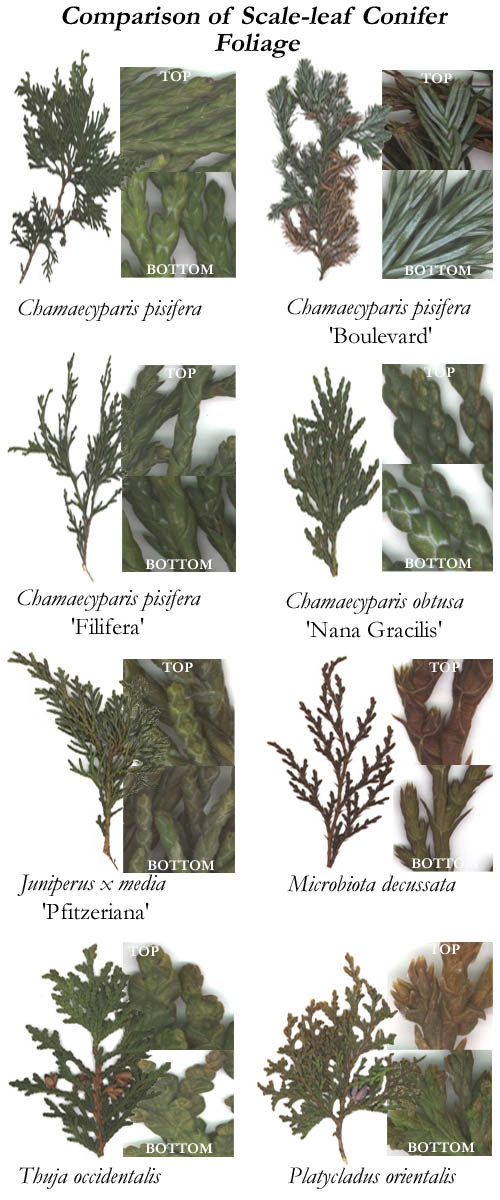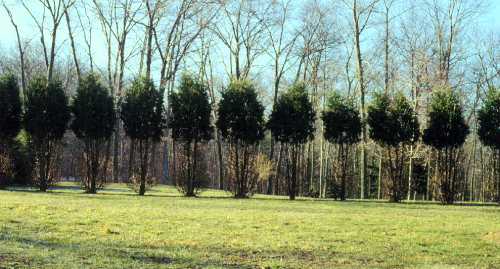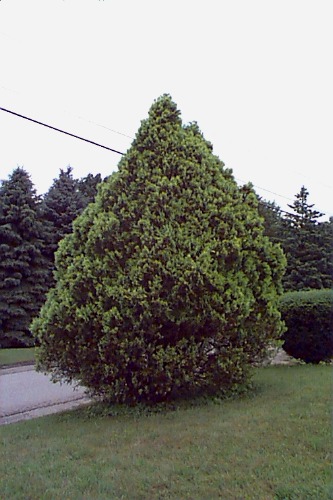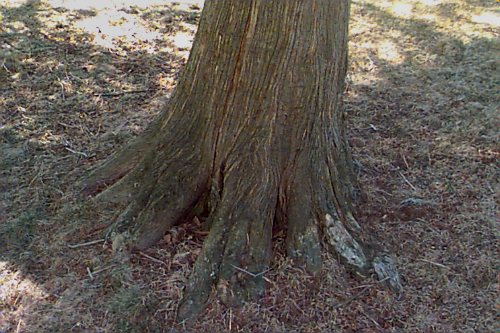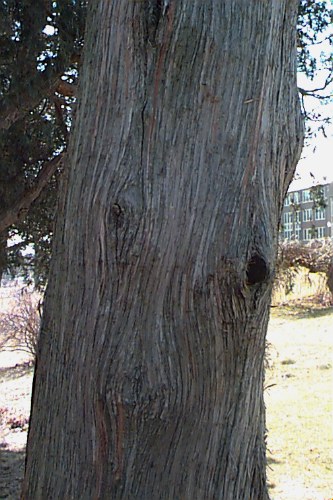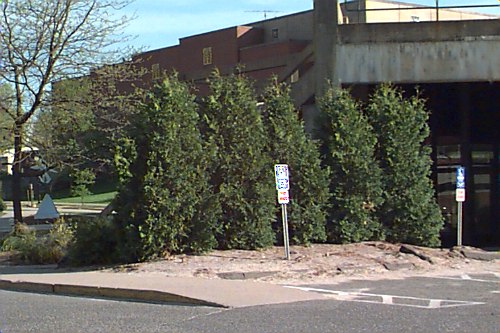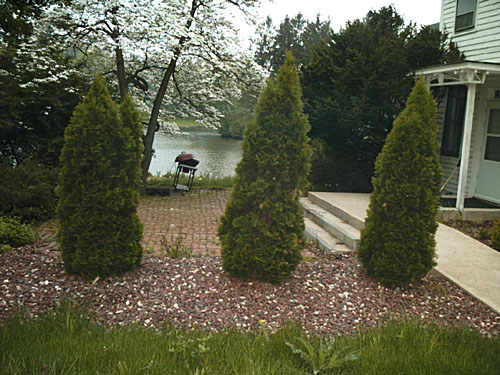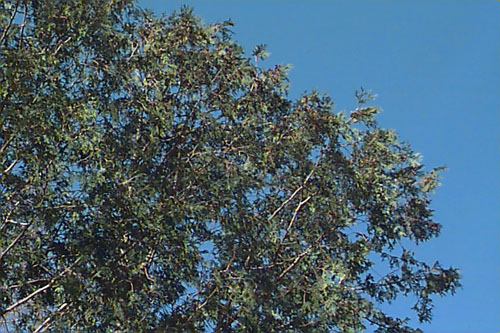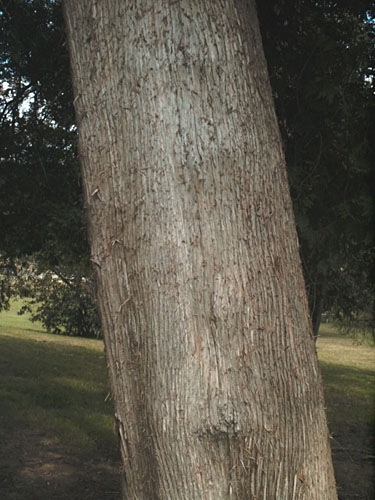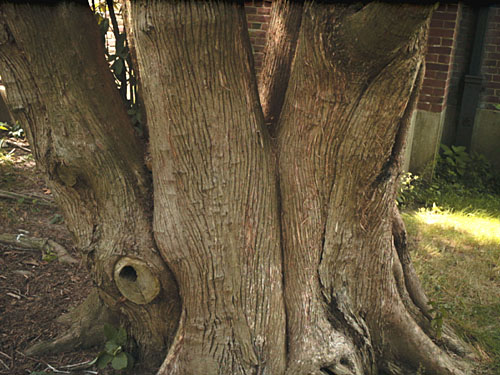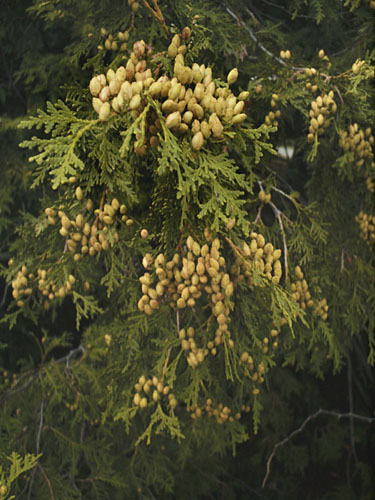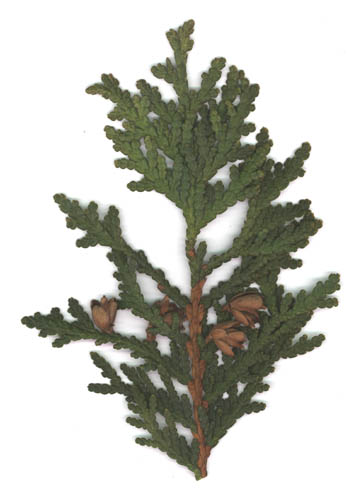Thuja occidentalis
Eastern Arborvitae, American Arborvitae
Cupressaceae
ExpandHabitat
- native to northeastern North America
- zone 3
Habit and Form
- a scale-leaved evergreen
- medium-sized tree
- 30' to 50' tall and 10' to 15' wide
- landscape plants mostly seen in the 20' to 30' size range
- conical shape
- dense and compact
- can be single-or multi-trunked
Summer Foliage
- leaves are small and scale-like (2mm long)
- scale-like leaves overlap forming flattened, rope-like shoots
- each leaf has a small resinous gland on the back
- color is green to dark green
- branchlets in horizontal planes or sprays
- crushed foliage emits a distinct tansy-like odor
Autumn Foliage
- foliage discolors to yellowish-green and even somewhat brown at times
- winter color is considered ugly by sone and cultivars have been selected for green winter foliage color
Flowers
- not of any ornamental significance
- monoecious
- at the branch tips
- borne singly
Fruit
- small cones with thin, overlapping scales
- brown to tan
- 0.33" to 0.5" long
- not particularly noticeable except when then is heavy cone set
Bark
- bark is gray on the surface and reddish-brown in the furrows
- furrowed into relatively narrow strips
- reasonably ornamental when visible on older specimens
Culture
- easily transplanted from containers and B&B
- likes moist air
- prefers moist, deep, loamy soil
- tolerant of acidic and alkaline soils
- generally quite adaptable and tolerant once established
- can be sheared to maintain shape and size
- full sun; partial shade is tolerated but plants become thin, open and much less appealing
- tolerant of somewhat wet soils
Landscape Uses
- for hedges
- for screens
- windbreaks
- good in cold climates
- foundation plant (small cultivar)
- cultivar selected for green winter foliage should be used in place of species
Liabilities
- leaf miner
- bag worms
- foliar burn in very harsh sites
- spider mites
- heavy snow often causes damage
- a favorite food of deer
ID Features
- conical shape
- dense, compact evergreen foliage
- scale-like leaves
- tansy-like odor emitted from crushed foliage
- branchlets held in horizontal planes
- small woody cone
- often with multiple trunks
Propagation
- by seed
- cultivars by cuttings
Cultivars/Varieties
Literally dozens of cultivars exist, but those listed here are most common a represent the broad spectrum of forms available.
'Bobozam' (Mr. Bowling Ball™) - Perhaps worth owning just for its unique names, this new dwarf form reportedly forms a perfect ball no larger than 3' tall and wide. The foliage is dense and medium green, needing no pruning to remain neat and tidy.
'Emerald' (also known as 'Smaragd' and 'Emerald Green') - This plant has become one of the most commercially popular standard forms. It displays bright emerald green foliage that holds its color well even during the winter months. The habit is narrow and compact with vertically held sprays of foliage. It grows to 15' tall and 5' wide and is well suited to hedging, formal accents and barriers. This cultivar shows excellent cold and heat tolerance.
'Hetz Midget' - A popular dwarf form, this old selection forms a rounded mound of layered light green foliage. It is slow-growing and usually does not exceed 3' tall.
'Holmstrup' - Popular for its narrow, compact upright habit to 5' tall and 2' wide, this plant bears upright sprays of light green foliage. It thrives in light shade, produces good cone set and functions well as a low hedge.
'Little Gem' - In time reaching 3' tall and greater in spread, this dense rounded form bears dark green foliage that bronzes slightly in winter.
'Little Giant' - This 6' tall and wide globe of healthy green foliage grows slowly and is easily maintained as a dwarf plant.
'Lutea' (also known as 'George Peabody') - This is a large-growing pyramidal form that can exceed 30' tall. The most notable feature of this fine old form, however, is the bright yellow foliage that is strong most of the season.
'Nigra' - Selected for its fine dark green winter color, this symmetrical, pyramidal form reaches 15' to 25' tall and 5' to 8' wide.
'Pyramidalis' - Representing perhaps more than one clone, this cultivar describes a form that is narrow and compact with a pyramidal form to 15' tall and 4' wide. The summer foliage is soft and bright green, but the plant may suffer winter discoloration.
'Rheingold' (very similar to 'Ellwangeriana Aurea') - Very popular in recent years, this ovoid plant grows to 5' tall and wide and is most notable for its orange-yellow foliage that deepens and reddens in winter. 'Aurea' is similar, but smaller -- to 3' tall and wide with a globe shape.
'Sherwood Frost' (also listed, perhaps incorrectly, as 'Sherwood Forest') - A very unusual variegated plant that shines in winter, this broad-upright plant has branch tips colored creamy-white. It is slow-growing and compact, possibly benefitting from a site in light shade.
'Techny' (also known as 'Mission') - Popular as a subject for hedging and screening, this broad pyramidal plant grows slowly to 15' tall. It holds its deep green foliage all year and is considered one of the hardiest forms available.
'Wareana' - The leaves of this very hardy form are blue-green and appear thick and heavy. It is useful for screens, but growth is slow to 8' tall with a pyramidal shape. This cultivar is considered one of the best choices for areas with cold winters. 'Wareana Lutescens' is similar, but has unusual creamy-yellow foliage coloring.
'Wintergreen' (also known as 'Hetz Wintergreen') - A superior pyramidal form which grows to 30' tall and 10' wide, this plant holds its dark green foliage color even through cold winters. It may also display better shade tolerance than other forms, but is not as fine-textured in foliage and habit.
'Woodwardii' - This is an older globe-shaped form which generally reaches 5' tall and wide. The foliage is dark green in summer, but often browns badly in winter. For this reason, it is not considered preferable to other, newer globular forms.
